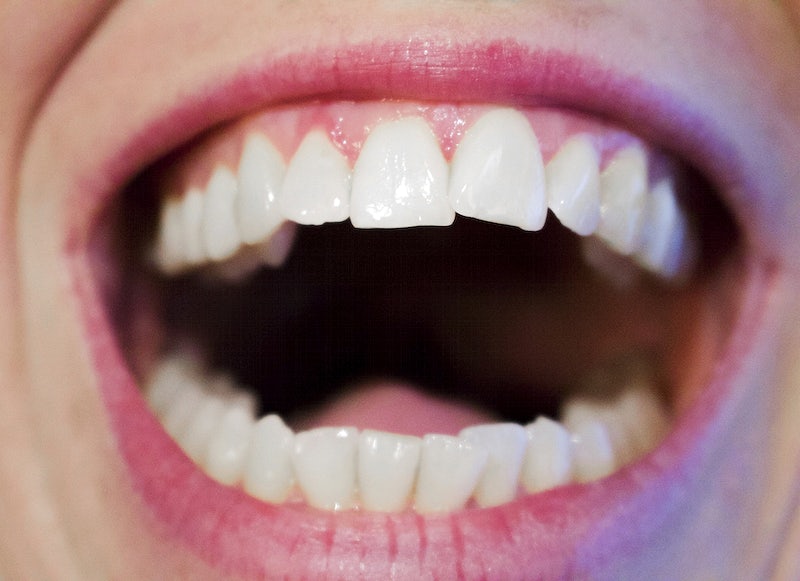Are you struggling with gingivitis? Read on to learn how a dental irrigator can help you prevent this common dental problem.
Introduction
Gingivitis is a common dental problem that affects millions of people worldwide. It is an inflammation of the gums that can lead to bleeding, swelling, and tenderness. If left untreated, it can progress to a more severe form of gum disease called periodontitis, which can result in tooth loss.
The good news is that there are many ways to prevent gingivitis, and one of them is by using a dental irrigator. In this article, we’ll explore the benefits of using a dental irrigator to prevent gingivitis, how it works, and some frequently asked questions about this useful dental tool.

How a Dental Irrigator Can Prevent Gingivitis
A dental irrigator, also known as a water flosser, is a device that uses a stream of water to clean between teeth and along the gum line. It is an effective tool for removing food particles and plaque that can accumulate in hard-to-reach areas of the mouth.
Here are some of the ways that a dental irrigator can help prevent gingivitis:
- Removes plaque: Plaque is a sticky film of bacteria that can build up on teeth and gums, leading to gingivitis. A dental irrigator can help remove plaque and prevent it from causing gum inflammation.
- Massages gums: The gentle pressure of the water stream from a dental irrigator can massage the gums, increasing blood flow and promoting healthy tissue.
- Reduces bleeding: Gingivitis can cause gums to bleed when brushing or flossing. Using a dental irrigator can help reduce bleeding and promote healthy gums.
- Prevents gum recession: Gum recession is a common complication of gingivitis. Using a dental irrigator can help prevent gum recession by keeping the gums healthy and strong.
- Improves oral hygiene: Using a dental irrigator as part of your daily oral hygiene routine can help improve overall oral health and prevent a variety of dental problems, including gingivitis.
How to Use a Dental Irrigator
Using a dental irrigator is easy and can be done in just a few simple steps:
- Fill the reservoir with warm water and add any recommended oral care solution.
- Select the appropriate nozzle for your needs.
- Adjust the pressure setting to your comfort level.
- Lean over the sink and place the nozzle in your mouth.
- Turn on the device and guide the water stream along your gum line, making sure to clean between each tooth.
- Spit out the water and repeat the process until all areas of your mouth have been cleaned.
- Rinse the nozzle and reservoir with water and let them dry before storing.
FAQs about Dental Irrigators and Gingivitis
Q: Can a dental irrigator replace brushing and flossing?
A: No, a dental irrigator is not a substitute for brushing and flossing. It is a supplementary tool that can help improve oral hygiene and prevent dental problems.
Q: Is a dental irrigator safe for everyone to use?
A: Most people can safely use a dental irrigator. However, it’s important to follow the manufacturer’s instructions and consult with your dentist if you have any concerns.
Q: How often should I use a dental irrigator?
A: It’s recommended to use a dental irrigator once a day as part of your oral hygiene routine.
Q: Can a dental irrigator be used with braces or other dental appliances?
A: Yes, a dental irrigator can be used with braces, bridges, and other dental appliances.
Q: Can a dental irrigator cause damage to gums or teeth?
A: If used improperly, a dental irrigator can cause damage to gums or teeth. It’s important to follow the manufacturer’s instructions and consult with your dentist if you have any concerns.
Q: Can a dental irrigator prevent bad breath?
A: Yes, a dental irrigator can help prevent bad breath by removing food particles and bacteria that can cause odor.
Conclusion
In conclusion, using a dental irrigator can be an effective way to prevent gingivitis and promote healthy gums. By removing plaque, massaging gums, reducing bleeding, preventing gum recession, and improving oral hygiene, a dental irrigator can be a valuable addition to your daily oral care routine.
If you’re considering using a dental irrigator, it’s important to choose a high-quality device and follow the manufacturer’s instructions. You should also consult with your dentist if you have any concerns or questions about using a dental irrigator.
Remember, prevention is always better than cure, so don’t wait until you have gingivitis to start taking care of your gums. Incorporate a dental irrigator into your oral hygiene routine today and enjoy a healthy smile for years to come.